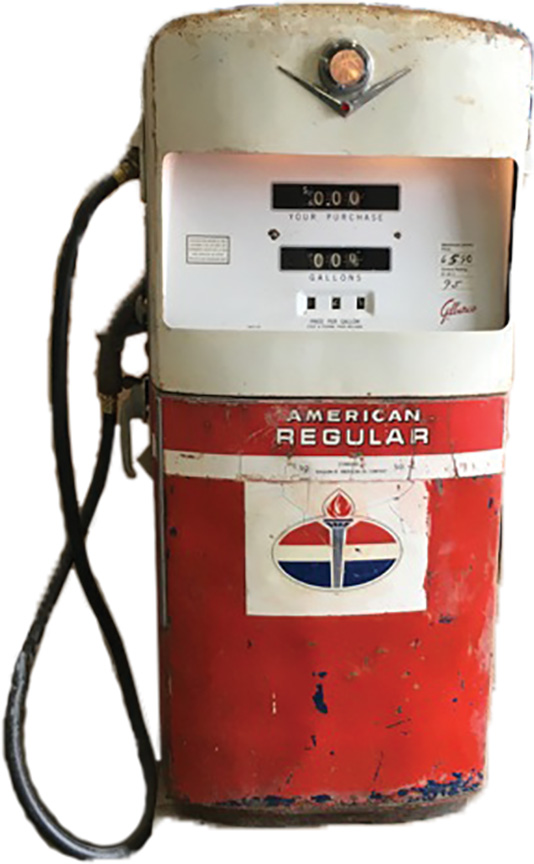Dorri Partain
Northeast News
Fill ‘er up! If your gas gauge is hitting the E, you’ll be looking for a filling station to refuel your tank. And if you keep your eyes peeled, you’ll no doubt find a museum-quality restored gas station, complete with original gas pumps, signage, and a good dose of nostalgia for the original Route 66 highway.
The invention of the fuel dispenser predates the invention of the automobile. In 1885, Sylvanus Bowser (1854-1938) invented a pump that could be used to fill containers with fuel oils or kerosine. Years later, a hardware store owner devised a system that would pump fuel from an underground storage tank. John J. Tokheim (1871-1941) produced a new type of dispenser, and patented his Dome Oil Pump in 1901. The Tokheim Manufacturing Co. competed with S.F. Bowser & Co. as fuel pumps popped up along city intersections and small towns along the U.S. Highway System.
The Dome Oil Pump operated and resembled a hand-powered water pump, but the gas was pumped into a glass dome at the top so consumers could see the amount and quality of the gas. The cost was calculated manually. By the 1920’s nearly all gas pumps used a glass cylinder to measure the amount of gas, and Bowser invented the automatic shut-off nozzle in 1921, which greatly enhanced measuring and safe delivery of fuel.
The 1930’s saw the introduction of electric pumps and calculating pumps that measured and totaled the cost of the fuel as it was being pumped. Now oil companies could have pumps customized to display their specific brand and colors, topped by a lighted globe.
This 1950’s American Oil Company (Standard/Amoco) pump was manufactured by Gilbarco and was last used when the price of gas was mandated not to exceed 65.9 cents per gallon.



















